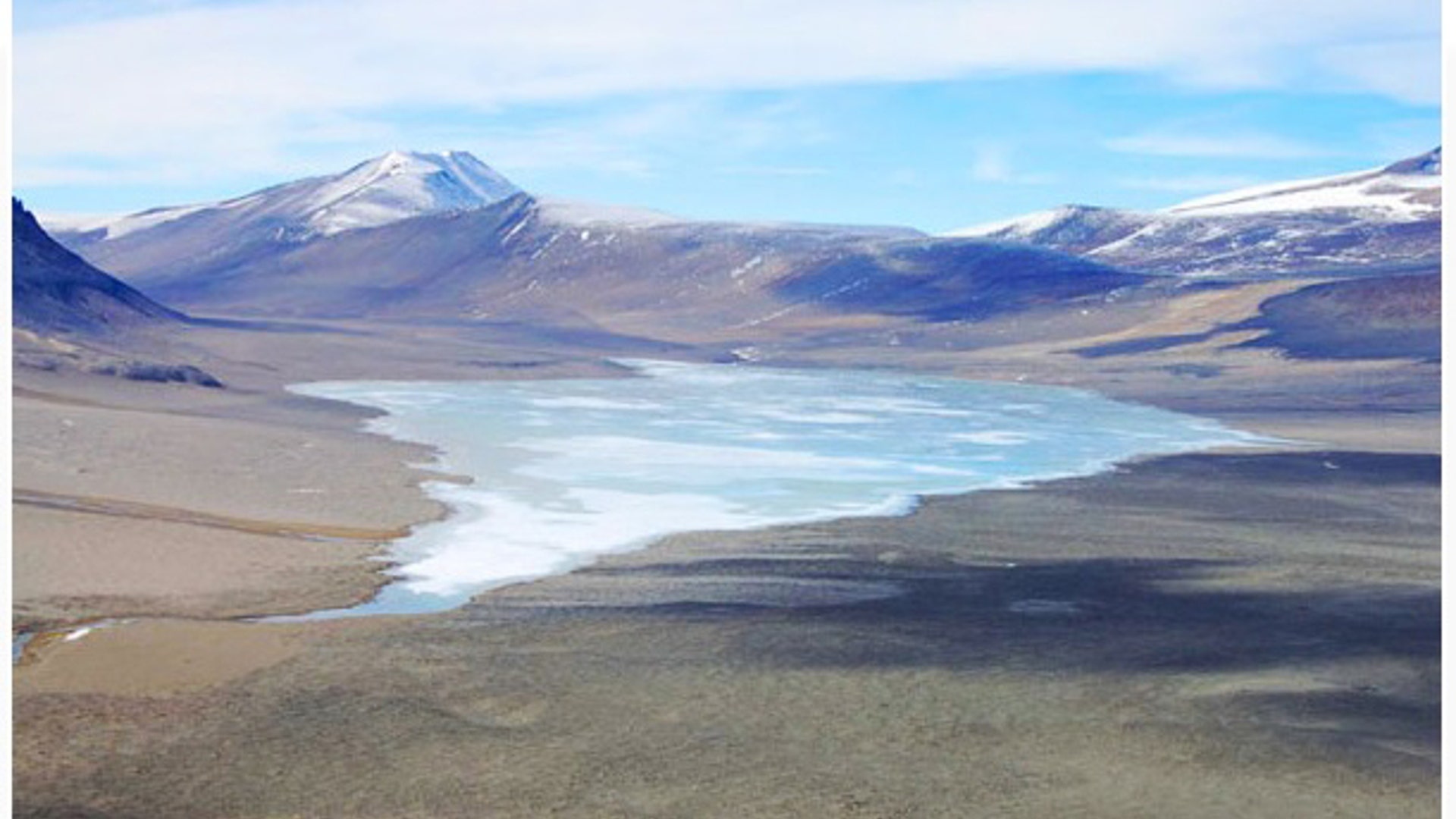Move Back
ADVERTISEMENT
Skip- Published9 Images
Antarctic lake home to ancient life
Beneath the icy surface of a buried Antarctic lake, in super-salty water devoid of light and oxygen that is also cold enough to freeze seawater, researchers have now discovered that a diverse community of bacteria has survived for millennia.
![hunt_for_Antarctica_Life_3]()
![Where_is_Lake_Vida]()
![hunt_for_Antarctica_Life_1]() Members of the 2010 Lake Vida expedition team, Dr. Peter Doran (professor, University of Illinois, Chicago), Dr. Chris Fritsen (research professor, Desert Research Institute, Reno, Nev.) and Jay Kyne (an ice driller) use a sidewinder drill inside a secure, sterile tent on the lakes surface to collect an ice core and brine existing in a voluminous network of channels 16 meters and more below the lake surface.read moreDesert Research Institute, Emanuele KuhnShare
Members of the 2010 Lake Vida expedition team, Dr. Peter Doran (professor, University of Illinois, Chicago), Dr. Chris Fritsen (research professor, Desert Research Institute, Reno, Nev.) and Jay Kyne (an ice driller) use a sidewinder drill inside a secure, sterile tent on the lakes surface to collect an ice core and brine existing in a voluminous network of channels 16 meters and more below the lake surface.read moreDesert Research Institute, Emanuele KuhnShare![hunt_for_Antarctica_Life_6]()
![lake_vida_clean_room_1]()
![hunt_for_Antarctica_Life]()
![hunt_for_Antarctica_Life_4]() The brine ranges from yellow to orange in color due to iron-laced compounds within it. The investigators found the temperature of the water was about 8 degrees Fahrenheit (minus 13 degrees Celsius) — its saltiness, about five to six times greater than average ocean water, keeps it from freezing like freshwater or seawater would. It is also completely depleted of oxygen and mildly acidic.read more
The brine ranges from yellow to orange in color due to iron-laced compounds within it. The investigators found the temperature of the water was about 8 degrees Fahrenheit (minus 13 degrees Celsius) — its saltiness, about five to six times greater than average ocean water, keeps it from freezing like freshwater or seawater would. It is also completely depleted of oxygen and mildly acidic.read more![hunt_for_Antarctica_Life_5]() But despite the tough set of conditions, the researchers found the diverse and thriving community of microbes in the brine. "What's most surprising is that there's anything living down there — it's a pretty harsh environment for life to take hold," Doran told OurAmazingPlanet. "There's a mantra that goes, 'wherever on Earth you find water, you find life,' and this is another one of those examples."read more
But despite the tough set of conditions, the researchers found the diverse and thriving community of microbes in the brine. "What's most surprising is that there's anything living down there — it's a pretty harsh environment for life to take hold," Doran told OurAmazingPlanet. "There's a mantra that goes, 'wherever on Earth you find water, you find life,' and this is another one of those examples."read more![hunt_for_Antarctica_Life_2]() The overall chemistry of this brine suggests that chemical reactions between the water and the underlying sediment generated the reactive chemicals seen in the brine. The molecular hydrogen seen in the brine might serve as a fuel source to help support its microbial life, researchers added.read more
The overall chemistry of this brine suggests that chemical reactions between the water and the underlying sediment generated the reactive chemicals seen in the brine. The molecular hydrogen seen in the brine might serve as a fuel source to help support its microbial life, researchers added.read more- Published9 Images
Antarctic lake home to ancient life
Beneath the icy surface of a buried Antarctic lake, in super-salty water devoid of light and oxygen that is also cold enough to freeze seawater, researchers have now discovered that a diverse community of bacteria has survived for millennia.
Move Forward
- Antarctic lake home to ancient life









Thumbnail View
Image 0 of 9








